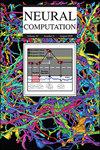Toward Generalized Entropic Sparsification for Convolutional Neural Networks
IF 2.1
4区 计算机科学
Q3 COMPUTER SCIENCE, ARTIFICIAL INTELLIGENCE
引用次数: 0
Abstract
Convolutional neural networks (CNNs) are reported to be overparametrized. The search for optimal (minimal) and sufficient architecture is an NP-hard problem: if the network has N neurons, then there are 2N possibilities to connect them—and therefore 2N possible architectures and 2N Boolean hyperparameters to encode them. Selecting the best possible hyperparameter out of them becomes an Np-hard problem since 2N grows in N faster then any polynomial Np. Here, we introduce a layer-by-layer data-driven pruning method based on the mathematical idea aiming at a computationally scalable entropic relaxation of the pruning problem. The sparse subnetwork is found from the pretrained (full) CNN using the network entropy minimization as a sparsity constraint. This allows deploying a numerically scalable algorithm with a sublinear scaling cost. The method is validated on several benchmarks (architectures): on MNIST (LeNet), resulting in sparsity of 55% to 84% and loss in accuracy of just 0.1% to 0.5%, and on CIFAR-10 (VGG-16, ResNet18), resulting in sparsity of 73% to 89% and loss in accuracy of 0.1% to 0.5%.卷积神经网络的广义熵稀疏化研究。
据报道,卷积神经网络(cnn)被过度参数化。寻找最优(最小)和充分的架构是一个np困难问题:如果网络有$N$神经元,那么有2$^{N}$连接它们的可能性-因此有2$^{N}$可能的架构和2$^{N}$布尔超参数来编码它们。从它们中选择最好的超参数变成了一个困难的问题,因为2$^{N}$在$N$中的增长速度比任何多项式$N^{p}$都快。在这里,我们引入了一种基于数学思想的逐层数据驱动的剪枝方法,旨在解决剪枝问题的计算可扩展的熵松弛问题。使用网络熵最小化作为稀疏性约束,从预训练(完整)CNN中找到稀疏子网络。这允许部署具有次线性扩展成本的数值可扩展算法。该方法在几个基准(架构)上进行了验证:在MNIST (LeNet)上,稀疏度为55%至84%,准确度损失仅为0.1%至0.5%;在CIFAR-10 (vgg16, ResNet18)上,稀疏度为73%至89%,准确度损失为0.1%至0.5%。
本文章由计算机程序翻译,如有差异,请以英文原文为准。
求助全文
约1分钟内获得全文
求助全文
来源期刊

Neural Computation
工程技术-计算机:人工智能
CiteScore
6.30
自引率
3.40%
发文量
83
审稿时长
3.0 months
期刊介绍:
Neural Computation is uniquely positioned at the crossroads between neuroscience and TMCS and welcomes the submission of original papers from all areas of TMCS, including: Advanced experimental design; Analysis of chemical sensor data; Connectomic reconstructions; Analysis of multielectrode and optical recordings; Genetic data for cell identity; Analysis of behavioral data; Multiscale models; Analysis of molecular mechanisms; Neuroinformatics; Analysis of brain imaging data; Neuromorphic engineering; Principles of neural coding, computation, circuit dynamics, and plasticity; Theories of brain function.
 求助内容:
求助内容: 应助结果提醒方式:
应助结果提醒方式:


